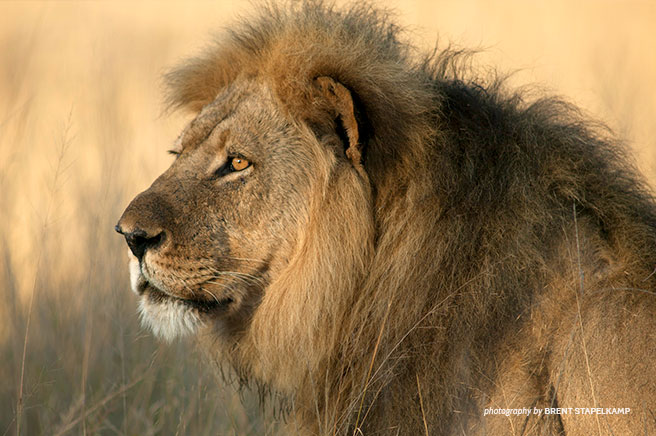Living Alongside Carnivores

Though they live next to Tanzania’s largest national park, residents in the villages surrounding Ruaha National Park see no benefits from the presence of wildlife, particularly carnivores.
And there are plenty of carnivores here: The area supports a tenth of the world’s remaining lions, one of East Africa’s four large cheetah populations and one of only six remaining viable populations of the African wild dog. With people living in such close proximity to wildlife, livestock depredation is a regular phenomenon. So are retaliatory killings of carnivores, particularly lions. In 2011 – 2012, the rate of lion killing in this area was the highest in all of East Africa. One village reportedly killed 39 lions in 18 months. The situation was dire for carnivores and humans alike. “We needed to create tangible benefits from carnivore presence and enhance appreciation of wildlife,” says Amy Dickman. Dickman’s Ruaha Carnivore Project (RCP) has found some innovative ways to do just that, and AWF is proudly supporting its work.
DVD nights
One of RCP’s methods is its popular DVD nights. In 2015, RCP provided eight camera traps to each of four villages surrounding the national park. Each village placed its camera traps in locations residents determined would garner the most wildlife particularly carnivore—photos. At the end of each month, RCP gathers with each village for a DVD night to present the images captured on the camera traps and discuss the ecological benefits of wildlife. Each image garners a certain number of points based on the type and number of species captured. (Extra points are rewarded for carnivore photos.) At the end of three months, the village with the greatest number of points “wins,” earning benefits that residents determine they most want for their community. The other villages still receive prizes—such as schoolbooks, health supplies or veterinary medicine—according to their rank. The competition begins anew at the end of each three-month period. The monthly DVD nights are a hit with villagers. In 2015, more than 20,000 locals had attended the DVD nights. “The local people are very excited about having control of the wildlife monitoring and seeing how the camera-trap images translate into points, and then into benefits,” Dickman reports, adding that all residents who saw the images wanted to learn more about the specific species that lived on their village land.
Changing attitudes
Together with other interventions—including the provision of predator proof livestock enclosures, field trips into the national park for residents and secondary school scholarships for promising students—we’re changing attitudes toward carnivores. Take what occurred in September. After a lion hunt in which warriors from the local Barabaig tribe killed two lion cubs, RCP gathered with the village to discuss what happened. “After much discussion about the benefits that he village receives from RCP, the village elders unanimously agreed that lion hunting could not continue and that future hunts must be stopped,” RCP reports. The village even went so far as to fine the leaders of the hunt. “This is a very unusual and promising development,” Dickman explains. “Traditionally, young men have been rewarded for going on lion hunts. The fact that the community leaders themselves decided to take this action demonstrates how much the community’s attitude toward large carnivores has changed since RCP first began its conservation efforts.”